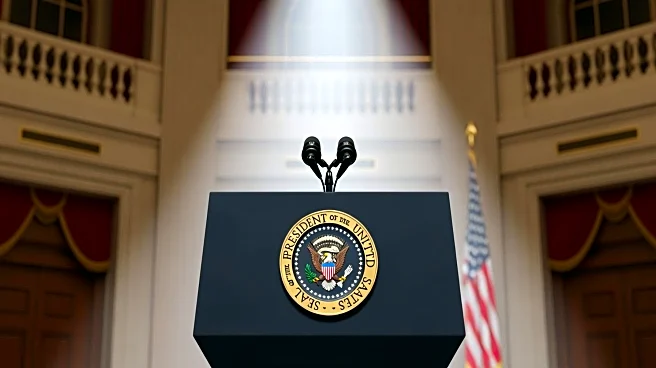What's Happening?
Hamas is experiencing significant internal divisions as it negotiates with Fatah over control of the Gaza Strip following recent conflicts. The rift is primarily between the military leadership in Gaza and
the political leadership abroad. The political faction, led by Khaled Mashal and Izzat al-Rishq, is pushing for a more pragmatic approach, focusing on regional openness and improving Hamas's international image. In contrast, the military wing, led by Khalil al-Hayya and Mousa Abu Marzouk, advocates for continued armed resistance and stronger ties with Iran. This division has led to public disputes on social media, with various accounts expressing support for different factions within Hamas. The group has issued a statement urging unity and warning against divisive efforts.
Why It's Important?
The internal conflict within Hamas could significantly impact the political landscape in the Gaza Strip and the broader Middle East. The outcome of these internal struggles may influence Hamas's future strategies, including its approach to peace negotiations and regional alliances. A shift towards a more pragmatic political stance could open new diplomatic channels and potentially ease tensions in the region. Conversely, a continued focus on armed resistance could lead to further instability and conflict. The situation also highlights the challenges of governance and unity within organizations that have both political and military components.
What's Next?
As negotiations with Fatah continue, the internal dynamics within Hamas will likely play a crucial role in shaping the future governance of the Gaza Strip. The international community, particularly countries with vested interests in Middle Eastern stability, will be closely monitoring these developments. Potential outcomes could include a realignment of regional alliances or shifts in international support, depending on which faction within Hamas gains the upper hand. The situation remains fluid, and the resolution of these internal conflicts will be critical in determining the group's future direction.












